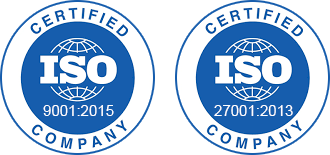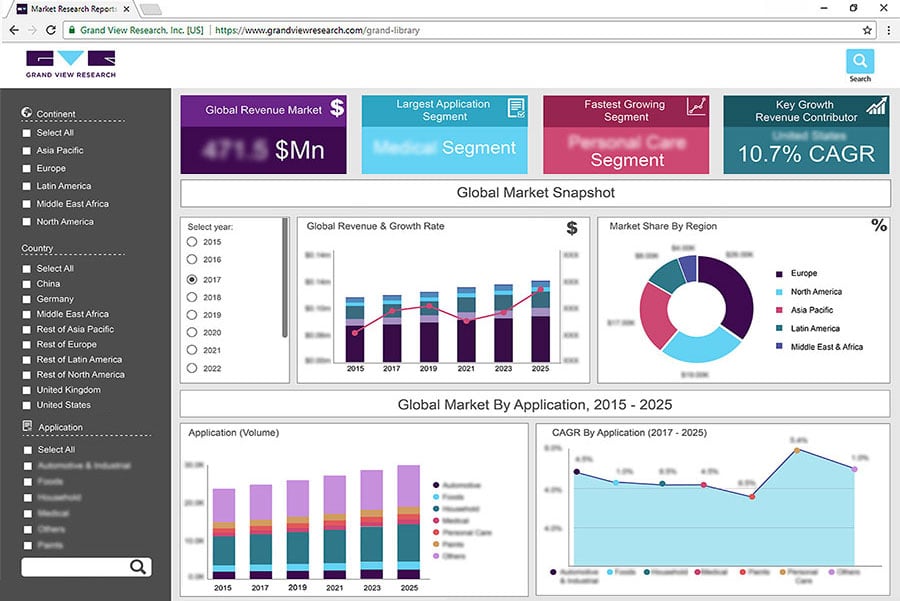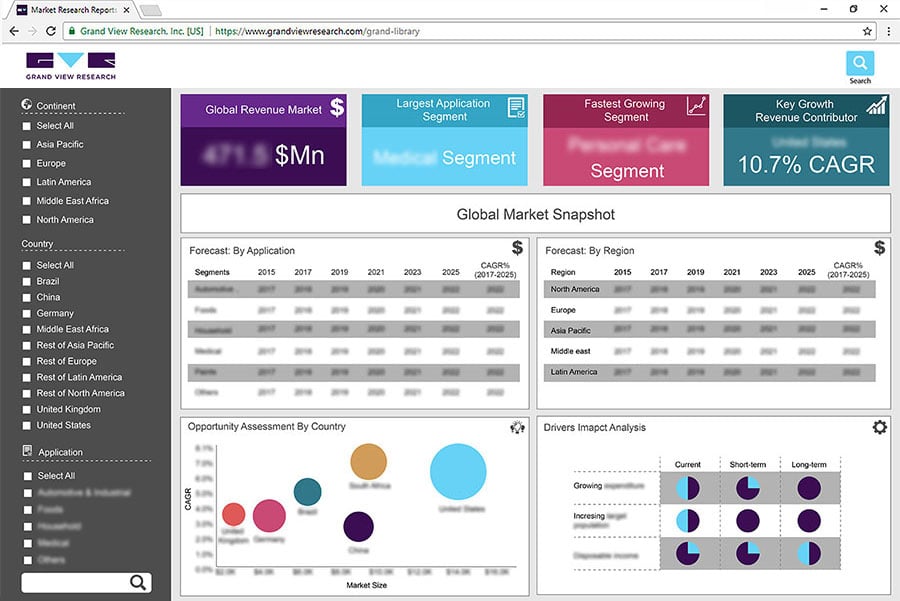- Home
- »
- Medical Devices
- »
-
Medical Devices Cuffs Market Size, Share & Trends Report, 2027GVR Report cover
![Medical Devices Cuffs Market Size, Share & Trends Report]()
Medical Devices Cuffs Market Size, Share & Trends Analysis Report By Product (Blood Pressure Cuffs, Cuffed Endotracheal Tube), By End-use (Hospitals, Ambulatory Surgery Centers), By Region, And Segment Forecasts, 2020 - 2027
- Report ID: GVR-4-68039-211-1
- Number of Report Pages: 110
- Format: PDF, Horizon Databook
- Historical Range: 2016 - 2018
- Forecast Period: 2020 - 2027
- Industry: Healthcare
Report Overview
The global medical devices cuffs market size was valued at USD 773.7 million in 2019 and is expected to expand at a compound annual growth rate (CAGR) of 4.3% from 2020 to 2027. The increasing adoption of sedentary lifestyles across the globe is one of the major factors driving the market for medical devices cuffs. The unhealthy lifestyle choices such as alcohol addiction and smoking are among the major causes leading to high blood pressure and Cardiovascular Diseases (CVDs). CVDs are the leading cause of mortality and morbidity due to the adoption of unhealthy lifestyles. For instance, according to the report published by the American Heart Association in 2018, around 92.1 million Americans were living with some form of CVD. CVD is the most common cause of mortality in the country as compared to cancer and other chronic diseases. Since cuffed blood pressure monitoring devices help to manage and prevent such conditions, thus, increasing adoption of unhealthy lifestyle habits is likely to boost the market for medical devices cuffs.
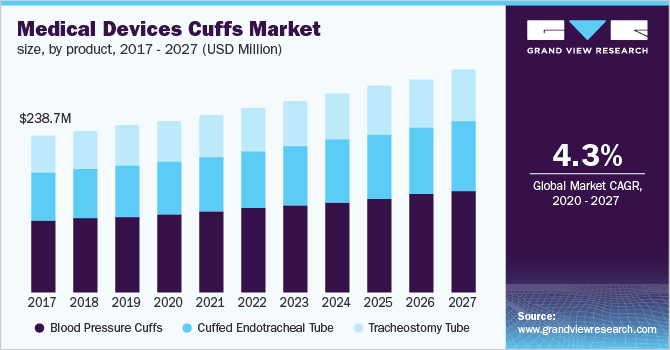
An increase in the adoption of home care services is anticipated to propel the growth of the market for medical devices cuffs over the forecast period. Long-term care, notable assistance services, and cost-effectiveness are major advantages of home care services. The patients undergoing home care generally requires cuffed blood pressure monitoring devices to regularly monitor the blood pressure of the patients. Furthermore, the presence of several organizations offering home care services globally is expected to promote the industry for medical devices cuffs. As per Statistics Norway, around 32.00% of people aged 80 years or above have used home care services in 2016 in Norway. This is expected to surge market growth over the forecast period.
The increasing cases of respiratory diseases across the globe is also one of the major factor driving for the market for medical devices cuffs. The rising rate of pollutants in the air and the release of hazardous gases causing lung diseases including chronic obstructive pulmonary disease (COPD) are the major factors for increasing the number of patients suffering from respiratory diseases. The other factors driving the overall growth include the spread of infections such as tuberculosis and hospital-acquired infection where testing tools such as cuffed tracheostomy tubes are used as a preliminary detection tool. For instance, as per the report published by the Forum of International Respiratory Societies in 2017, around 65.00 million people suffer from COPD and around 3.00 million people die every year from COPD worldwide.
The rising cases of tuberculosis, pneumonia, and lung cancer are also anticipated to propel the growth of the market for medical devices cuffs over the forecast period. For instance, as per the report published by the Forum of International Respiratory Societies in 2017, pneumonia kills more than a million people every year and is one of the leading causes of death in children. It also reported that around 10.00 million people develop tuberculosis (TB) and around 1.4 million people die from it every year and thereby it is the most common infectious disease across the globe. It also stated that around 1.6 million people die from lung cancer every year. Therefore, such instances are anticipated to boost the growth of the industry over the forecast period.
Medical Devices Cuffs Market Trends
Cuffed blood pressure control systems monitor patients' blood pressure on a regular basis, and are necessary for patients receiving home treatment. Designing and manufacturing these devices at an economical level with maximum standardization is likely to create new business opportunities in the upcoming years.
Demand for medical device cuffs is driven by an increase in the number of incidences of respiratory disorders around the world. Increased air pollution and the emission of toxic gases that cause lung diseases such as chronic obstructive pulmonary disease (COPD) are key contributors to the rise in the number of individuals suffering from respiratory ailments.
Product Insights
The blood pressure cuffs segment dominated the market and accounted for the largest revenue share of 45.4% in 2019. This is owing to the increasing adoption of home care services and rising cases of high blood pressure and cardiovascular diseases. For instance, according to the journal published by the World Atlas in 2018, Coronary Heart Diseases (CHD) accounts for the highest number of deaths every year in the U.K. It also reported that approximately 160,000 deaths were recorded every year from heart diseases and around 42,000 premature deaths are recorded due to Cardiovascular Diseases (CVD) in the U.K. In such cases blood pressure cuffs are one of the essential requirements for monitoring blood pressure in patients suffering from cardiovascular diseases, thereby boosting segment growth.
The tracheostomy tube segment is anticipated to witness the fastest growth rate in the industry over the forecast period. The cuffed tracheostomy tube allows positive pressure circulation and prevents aspiration. The increasing cases of respiratory diseases and COPD are the major factors surging the segment growth over the forecast period. For instance, as per the report published by the Forum of International Respiratory Societies in 2017, around 65.0 million people suffer from COPD every year across the globe.
End-use Insights
The hospital segment held the largest revenue share of 45.4% in 2019 in the market. This is owing to the rising incidence of cardiovascular diseases across the globe. For instance, as per the report published by the Centers for Disease Control and Prevention (CDC) in 2018, coronary heart disease is the most common type of cardiovascular disease and more than 370,000 people die every year in the U.S. In addition, the rising number of hospitals across the globe is also anticipated to surge the segment growth over the forecast period. For instance, as per the report published by the American Hospital Association in 2019, around 6,210 hospitals were reported in the U.S. in 2018, of which 2,968 are nongovernment not-for-profit community hospitals and 972 are state and local government community hospitals.
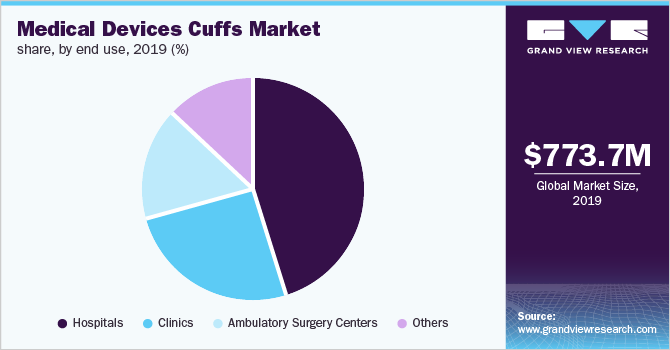
The ambulatory surgery centers segment is anticipated to witness the fastest growth rate over the forecast period. Ambulatory surgery centers are also known as outpatient surgery centers and are generally opted by patients undergoing less complicated procedures and requiring a limited period of stay. Currently, the demand for minimally invasive procedures is also increasing across the globe owing to its several advantages, which in turn the demand for ambulatory surgical centers is also anticipated to rise. Therefore, significant segment growth is expected over the forecast period.
Regional Insights
North America dominated the market in 2019 and accounted for the largest revenue share of 36.6%. The region is expected to witness a CAGR of 3.9% over the forecast period. Several favorable reimbursement policies, the introduction of technologically advanced products, and the presence of several key players in the market are anticipated to drive the market. In addition, this region is governed by regulatory bodies, which have laws for the reimbursement of medical devices. For instance, Medicare Part A covers the technical components of medical device cuffs. Medicare Part B covers the expenses of professional components of the procedure performed in hospital outpatient and inpatient settings.
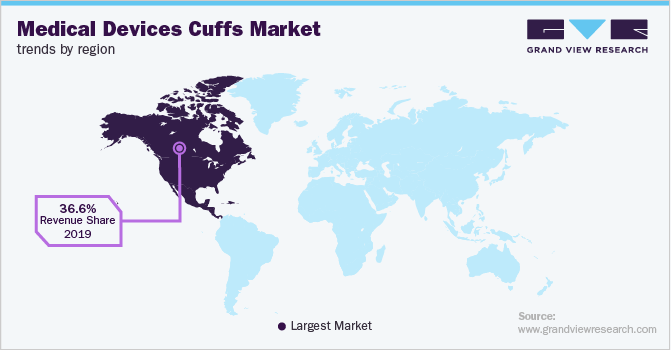
In the Asia Pacific, the market is anticipated to witness a considerable growth rate during the forecast period. The market is majorly driven by the increasing incidence of cardiovascular diseases and respiratory diseases. In addition, emerging economies such as China, Japan, South Korea, and India are also expected to witness considerable growth rate over the forecast period. In addition, the presence of several local players in China and Japan may also boost the industry growth. However, certain developing countries in this region are expected to witness a moderate growth rate over the forecast period. Low adoption of advanced healthcare facilities and a lack of sufficient skilled professionals in such countries may hinder the market. Moreover, the low rate of awareness among people regarding the treatment of cardiac diseases and low healthcare reimbursement facilities in developing countries is also anticipated to restrain market growth.
Key Companies & Market Share Insights
Key companies are stressing on research and development to develop technologically advanced products to gain a competitive edge. For instance, in February 2016, Hamilton Medical launched the IntelliCuff pressure controller in the US. This device continuously measures and automatically maintains the cuff pressure during mechanical ventilation of pediatrics, neonates, and adults by utilizing a cuffed tracheostomy or endotracheal tube.
In January 2017, Bactiguard launched its new BIP Endotracheal Tube Evac, with an aim to prevent Ventilator-Associated Pneumonia (VAP). The product is designed to offer the best protection against infection. This may increase the customer base and goodwill of the company.
Recent Developments
-
In May 2021, Medtronic launched a new pediatric monitor SonarMed airway monitoring system. The confirmed system is the first and only FDA-cleared airway monitoring device that delivers early notifications and specific data that aid in the coordination of a coordinated reaction to potentially crucial occurrences such as ETT movement and migration.
-
In December 2020, The EchoGlo peripheral nerve block portfolio was launched by Smiths Medical. This addition to the Portex pain management product line provides customers with a complete anesthetic solution.
-
In January 2022, Traid Life Science, a medical device firm that produces biologically-derived revolutionary solutions, was bought by Convatec Group. This strategy aimed at strengthening Convatec's Advanced Wound Care position in the United States expanding its exposure to a complementary and innovative technology platform.
Some of the prominent players in the medical devices cuffs market include:
-
Medtronic
-
Smiths Medical
-
Teleflex Incorporated
-
ConvaTec Inc.
-
Cook Medical
-
Troge Medical GmbH
-
Fuji Systems
-
Well Lead Medical Co. Ltd.
-
TRACOE medical GmbH
-
Pulmodyne, Inc.
Medical Devices Cuffs Market Report Scope
Report Attribute
Details
Market size value in 2020
USD 803.9 million
Revenue forecast in 2027
USD 1.1 billion
Growth Rate
CAGR of 4.3% from 2020 to 2027
Base year for estimation
2019
Historical data
2016 - 2018
Forecast period
2020 - 2027
Quantitative units
Revenue in USD million and CAGR from 2020 to 2027
Report coverage
Revenue forecast, company ranking, competitive landscape, growth factors, and trends
Segments covered
Product, end use, region
Regional scope
North America; Europe; Asia Pacific; Latin America; Middle East & Africa
Country scope
U.S.; Canada; U.K.; Germany; Japan; China; Brazil; Mexico; South Africa; Saudi Arabia
Key companies profiled
Medtronic; Smiths Medical; Teleflex Incorporated; ConvaTec Inc.; Cook Medical; Troge Medical GmbH; Fuji Systems; Well Lead Medical Co. Ltd.; TRACOE medical GmbH; Pulmodyne, Inc.
Customization scope
Free report customization (equivalent up to 8 analyst’s working days) with purchase. Addition or alteration to country, regional & segment scope.
Pricing and purchase options
Avail customized purchase options to meet your exact research needs. Explore purchase options
Medical Devices Cuffs Market SegmentationThis report forecasts revenue growth at global, regional, and country levels and provides an analysis of the latest industry trends in each of the sub-segments from 2016 to 2027. For the purpose of this study, Grand View Research has segmented the global medical devices cuffs market report on the basis of product, end use, and region:
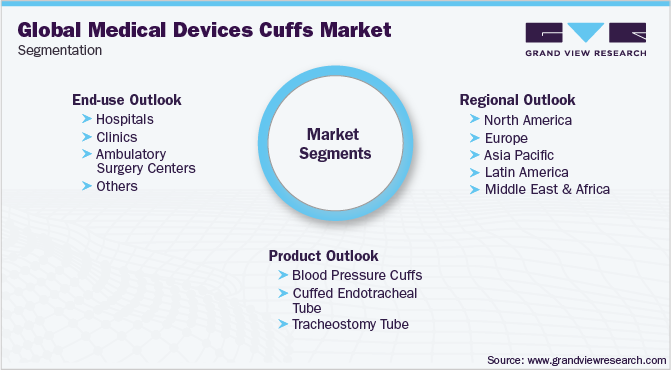
-
Product Outlook (Revenue, USD Million, 2016 - 2027)
-
Blood Pressure Cuffs
-
Cuffed Endotracheal Tube
-
Tracheostomy Tube
-
-
End-use Outlook (Revenue, USD Million, 2016 - 2027)
-
Hospitals
-
Clinics
-
Ambulatory Surgery Centers
-
Others
-
-
Regional Outlook (Revenue, USD Million, 2016 - 2027)
-
North America
-
U.S.
-
Canada
-
-
Europe
-
Germany
-
U.K.
-
-
Asia Pacific
-
Japan
-
China
-
-
Latin America
-
Brazil
-
Mexico
-
-
Middle East & Africa
-
South Africa
-
Saudi Arabia
-
-
Frequently Asked Questions About This Report
b. The global medical devices cuffs market size was estimated at USD 773.68 million in 2019 and is expected to reach USD 803.85 million in 2020.
b. The global medical devices cuffs market is expected to grow at a compound annual growth rate of 4.3% from 2020 to 2027 to reach USD 1,079.35 million by 2027.
b. North America dominated the medical devices cuffs market with a share of 36.64% in 2019. This is attributable to favorable reimbursement policies, the introduction of technologically advanced products, and the presence of several key players.
b. Some key players operating in the medical devices cuffs market include Medtronic, Smiths Medical, Teleflex Incorporated, ConvaTec Inc., Cook Medical, TROGE MEDICAL GmbH, Fuji Systems, Well Lead Medical Co. Ltd., TRACOE medical GmbH, and Pulmodyne, Inc.
b. Key factors driving the medical devices cuffs market growth include the rising prevalence of the chronic disease, growing geriatric population, increasing incidence of respiratory diseases.
Share this report with your colleague or friend.
![gvr icn]()
NEED A CUSTOM REPORT?
We can customize every report - free of charge - including purchasing stand-alone sections or country-level reports, as well as offer affordable discounts for start-ups & universities. Contact us now
![Certified Icon]()
We are GDPR and CCPA compliant! Your transaction & personal information is safe and secure. For more details, please read our privacy policy.
We are committed towards customer satisfaction, and quality service.
"The quality of research they have done for us has been excellent."
